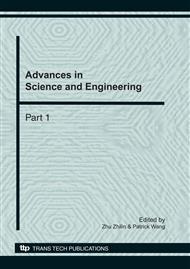p.717
p.722
p.727
p.733
p.739
p.744
p.748
p.754
p.760
Model Order Reduction for Pre-Stressed Harmonic Analysis of Micromechanical Beam Resonators
Abstract:
A second-order system model order reduction method for pre-stressed harmonic analysis of electrostatically actuated microbeams is demonstrated, which produces a low dimensional approximation of the original system and enables a substantial reduction of simulation time. The moment matching property for second-order dynamic systems is studied and the block Arnoldi algorithm is adopted for the generation of the Krylov subspace, which extracts the low order model from the discretized system assembled through finite element analysis. The difference between two successive reduced models suggests the choice of the order for the reduce model. A detailed comparison research among the full model and the reduced models is performed. The research results confirm the effectiveness of the presented method.
Info:
Periodical:
Pages:
739-743
Citation:
Online since:
November 2010
Authors:
Keywords:
Price:
Сopyright:
© 2011 Trans Tech Publications Ltd. All Rights Reserved
Share:
Citation:


